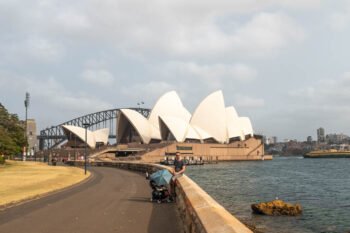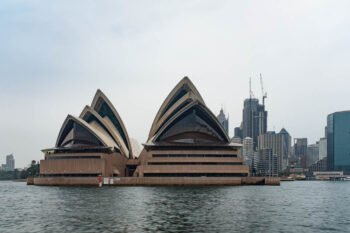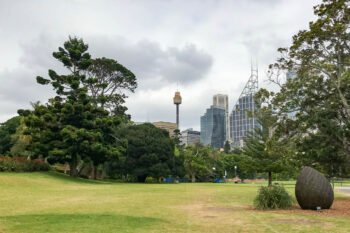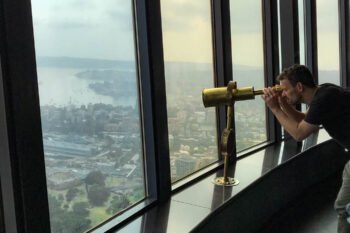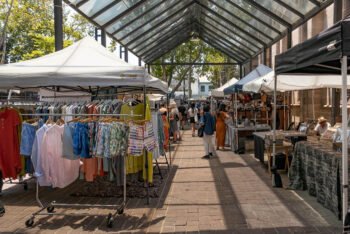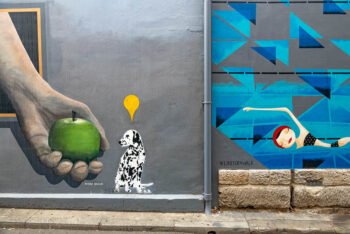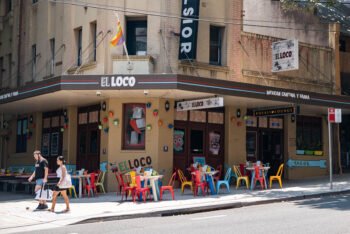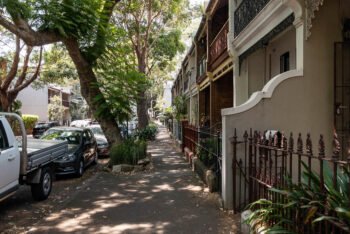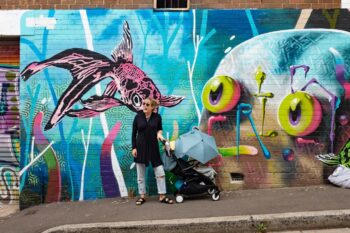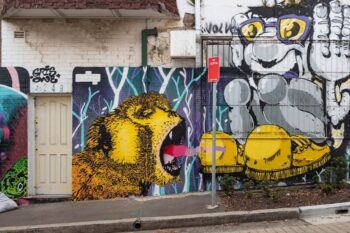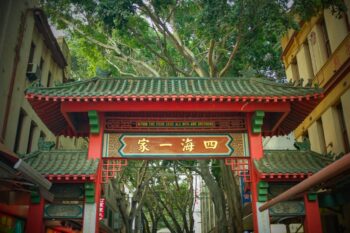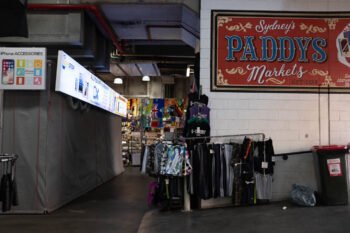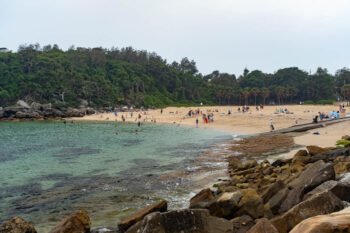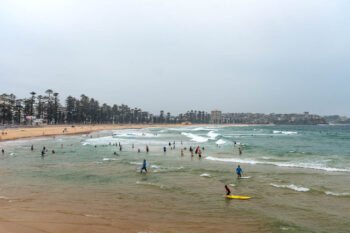What to Do in Sydney
The 22 best highights in Sydney
Latest update: August 8, 2023
In a nutshell: our Sydney highlights
- Sydney Opera House: Sydney’s iconic landmark and typical postcard motif of the city.
- Harbour Bridge: you have a great view of Sydney from the largest steel arch bridge in the world.
- The Rocks: In this hip district you will find trendy bars and restaurants as well as cool museums.
- Manly Beach: Our favorite beach in Sydney, more laid-back than the famous Bondi Beach.
- Birdcage Alley: Cool street with empty birdcages – a great photo motif!
These were our top 5 sights in Sydney. Do you want to find out more? Then just read on and check out all our highlights in Sydney.
Buy tickets for Sydney sights online in advance
Sydney is a very popular destination for a city trip. Therefore, it is almost inevitable that there will be queues in front of the ticket counters at the top attractions. To avoid waiting in line, you can buy tickets for the most popular highlights in advance.
For these Sydney must-sees, it’s worth buying tickets online before you go:
| Price per person | Tickets | |
|---|---|---|
| Sydney Opera House | A$43 | To the ticket |
| Sydney Tower Eye | A$20 | To the ticket |
| Taronga Zoo | A$51 | To the ticket |
The most important attractions of Sydney on a map
Finding your way around Sydney can be a bit confusing at first, so we’ve created a handy sightseeing map for you, featuring all the most important sights and attractions.
Click here to download the map for easy access
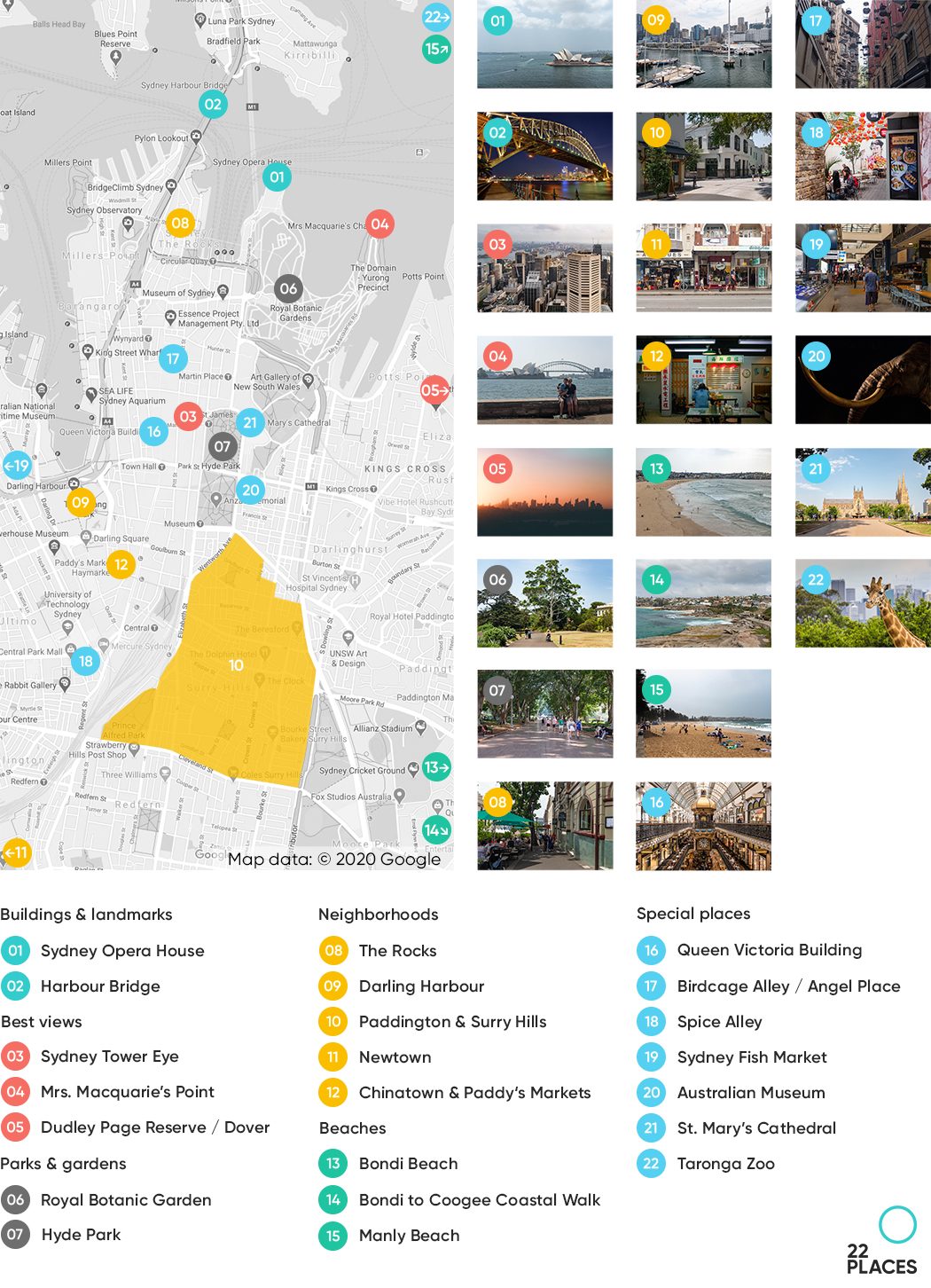
Sydney Opera House
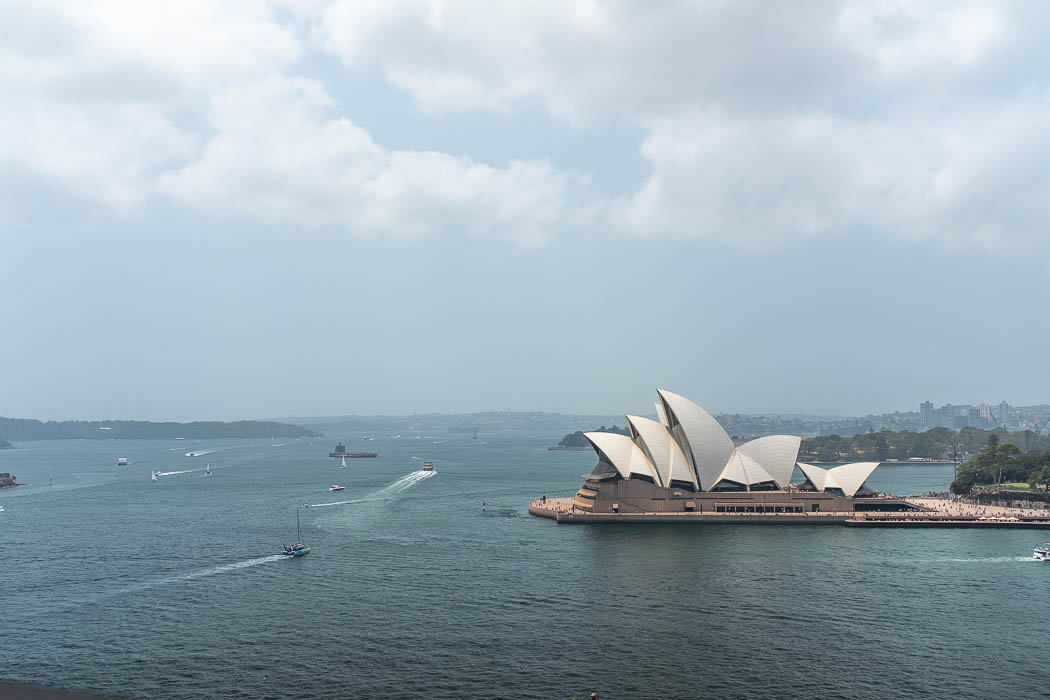
Every list of the most beautiful sights in Sydney has to start with the Sydney Opera House.
And with good reason: The Sydney Opera House is the most frequently photographed building in all of Australia, the landmark of Sydney, and probably one of the most famous buildings in the world. It was designated a UNESCO World Heritage Site in 2007.
The opera offers several one-hour guided tours in small groups during the day. The regularly scheduled tours are held in English.
We really enjoyed ourselves on the tour – it costs A$43 and takes visitors through all the different auditoriums while introducing them to the exciting history of the Opera’s construction.
The easiest way to book a tour is online:
Book a guided tour of the Opera
Our tip: With a bit of luck you’ll be able to buy discounted last-minute tickets to one of the performances after the tour, subject to availability. There’s no guarantee, but your odds are pretty good.
Harbor cruise with a view of the Opera House
We think the Opera House looks the most impressive when viewed from a distance. For the best views, we’d recommend the Harbour Bridge or taking a harbor cruise.
There are several harbor cruises that pass the Opera House. Here’s a selection:
Sydney Harbour: Tall shop lunch cruise
Sydney Harbour: 3-hour lunch cruise with live music
In the evening: 3-hour harbor cruise with 3-course dinner
Our tip: If you were planning a trip to Manly anyway (see attraction #19), you’ll pass the Opera House on the ferry ride over. So if it’s just the view you’re after, there’s no need to book a harbor cruise.
depends on the selected tour or performance
Harbour Bridge
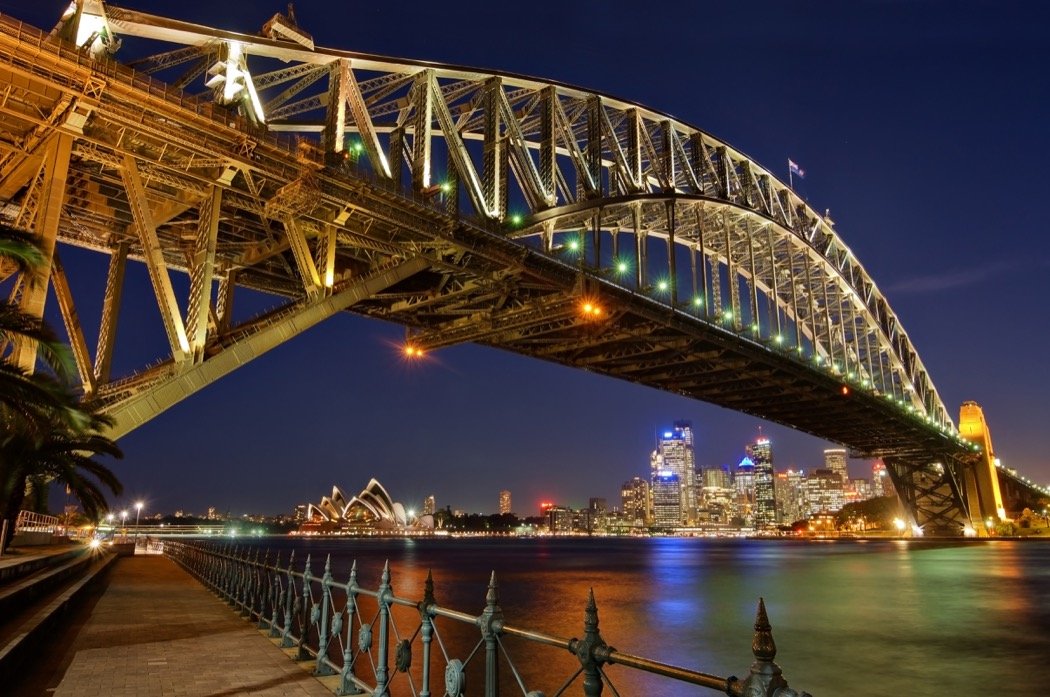
Harbour Bridge is one of the most prominent sights in Sydney, and you should definitely check it out.
Completed in 1932, the magnificent structure spans the full breadth of Sydney Harbour with a length of just over 500 meters and a width of 49 meters. It’s already an impressive sight during the day, but it’s even more stunning when it lights up at night.
While it’s a popular tourist attraction, it’s also a regular traffic and pedestrian bridge, so you can cross it for free and enjoy the breathtaking view of the harbor and Sydney Opera House on the way.
Even higher up on the Pylon Lookout
If the view from the footpath isn’t enough for you, then you can also climb to the top of the southeastern bridge tower. Once you’ve climbed the 200 or so steps, you’ll be treated to one of the most beautiful views of Sydney!
Admission costs A$19, payable only by credit card. Cash payments aren’t accepted.
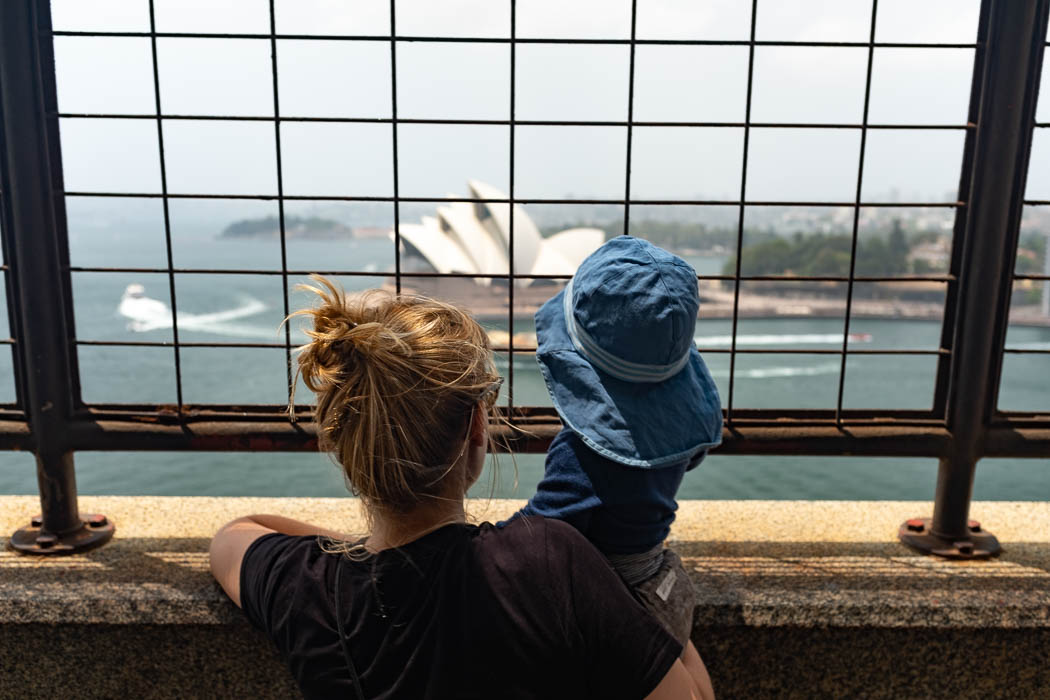
Sydney Tower Eye
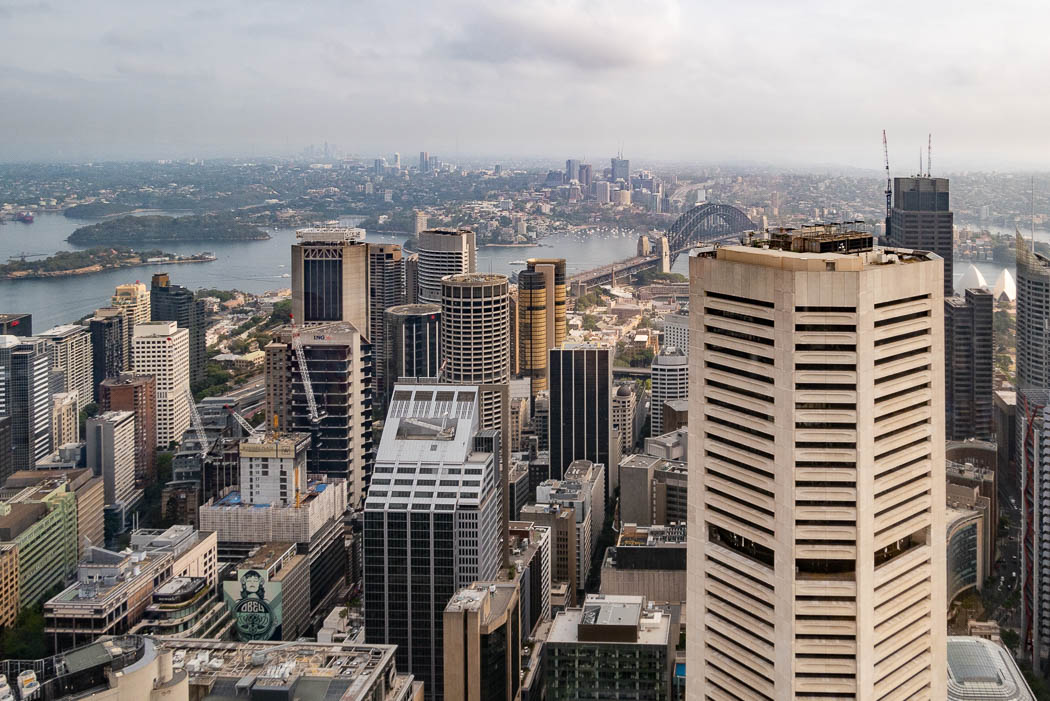
Sydney Tower is the tallest building in the city. Its striking architecture stands out from miles away.
The view from the top is phenomenal. On clear days, you can see as far as the Blue Mountains from the Tower Eye observation deck at a height of 251 meters.
The entrance to the Sydney Tower Eye can be a bit hard to find. It’s located inside Westfield Shopping Centre. Take the entrance at the corner of Market Street and Pitt Street where you’ll find an elevator that goes straight to the entrance to the Tower Eye on the 5th floor.
Our tip: Book your tickets in advance. An online ticket costs A$24.80, which is much cheaper than the A$31 charged at the door.
Book a ticket for Sydney Tower Eye
By the way: There’s a revolving restaurant at the top of the tower, offering stunning a 360° view of the city. Admission to the tower is free if you have a restaurant reservation.
Make a reservation at the Sydney Tower Eye restaurant
Also on the 5th floor is an excellent food court where you can enjoy a tasty and affordable meal before or after your visit.
Mrs. Macquarie's Point
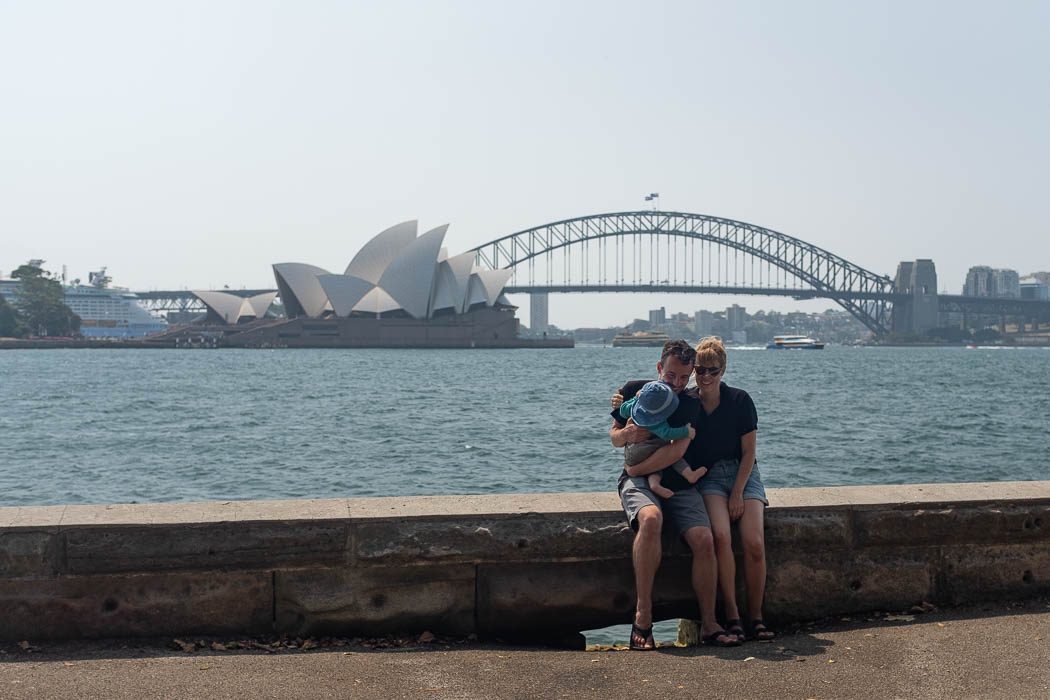
Mrs. Macquarie’s Point is located at the northeastern tip of a peninsula just outside the Royal Botanic Garden.
It’s named for the name of the wife of the former Governor of New South Wales in the early 19th century, who was so enamored with the view that a stone bench – Mrs. Macquarie’s Chair – was carved for her here, where she would sit for hours gazing out onto the harbor.
We can totally understand why! This lookout point is the perfect place to get a picture of both the Opera House and the Harbour Bridge in a single shot.
Dudley Page Reserve / Dover Heights
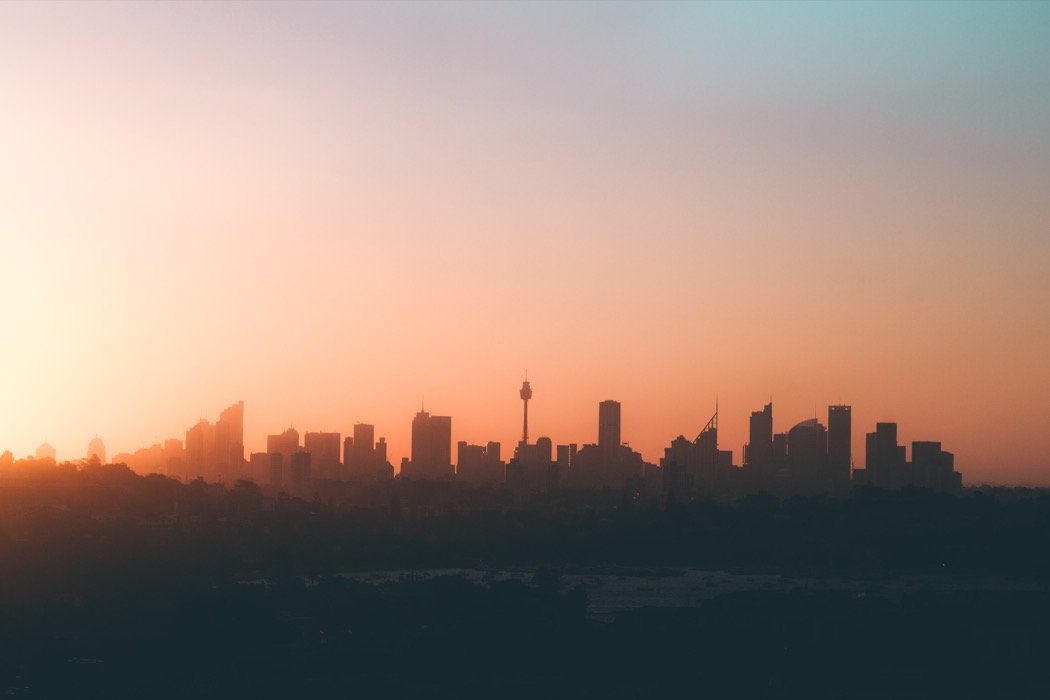
If you’re looking for a time out from the concrete jungle with a spectacular view, then head out to Dudley Page Reserve in the eastern coastal suburb of Dover Heights. Locals gather here in the evening for picnics, a game of cricket, or their daily workout.
There are no cafes or restaurants here, not even water fountains, so don’t forget to bring an ample supply of water, especially in the summer.
It’s basically a huge flat green area with no trees, and hence no shade. That means it’s almost entirely deserted during the day. But that’s okay, the view is best in the evening anyway. Plan your trip around sunset to line up some spectacular shots of the Sydney skyline.
To get there, take the T4 to Bondi Junction station. Then catch the 380 bus towards South Head Cemetery. Get off at Military Rd opp Weonga Rd, and you’ll be standing right in front of Dudley Page Reserve.
Our tip: Combine your visit to Dudley Page Reserve with a trip to Bondi Beach. It’s just a few stops from Bondi on the 380 bus, so you can spend the day at the beach and then head to Dover Heights an hour before sunset.
free
Royal Botanic Garden
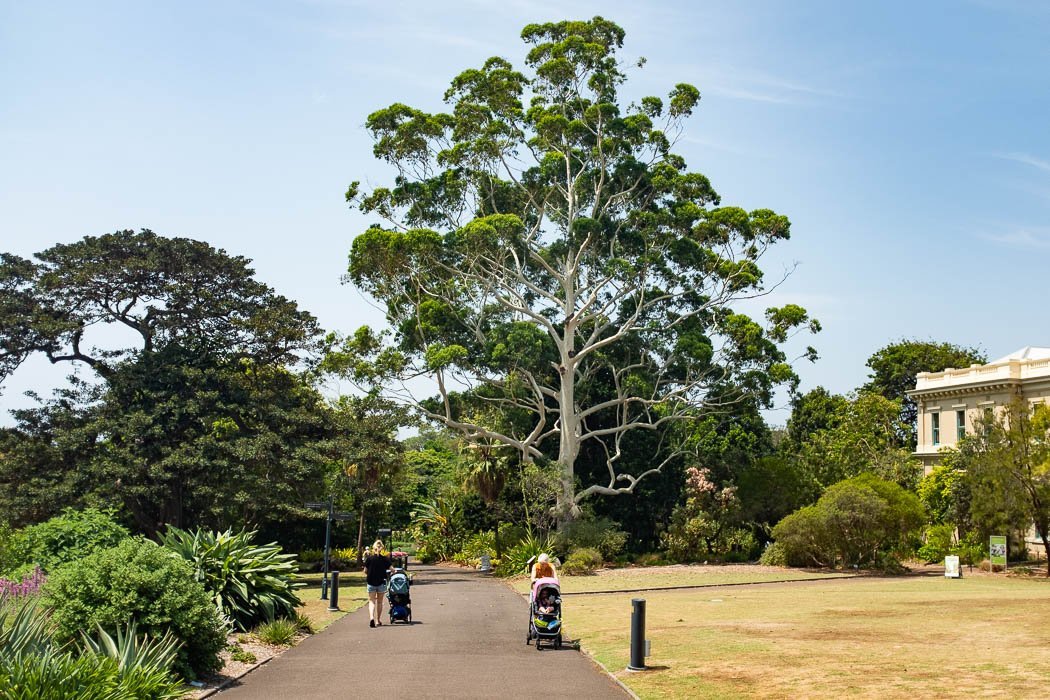
The Royal Botanic Garden expands just behind the Opera House and is the ideal spot for a picnic or a quick break from sightseeing.
Give yourself enough time to explore the gardens – there’s a lot to discover!
Our personal highlight were the cockatoos all over the park, just going about their day, completely unperturbed by all visitors. You’ll have the best odds of seeing the cockatoos if you plan your visit for the morning or early evening.
At the entrance to the park is the historic, Neo-Gothic Government House, which has been the official residence of the Governor of New South Wales for over 150 years. You can visit Government House for free as part of a guided tour, available every 30 minutes on Fridays, Saturdays, and Sundays from 10:30 am to 3 pm.
Important: Bring your passport, you’re going to need it at the entrance.
Hyde Park
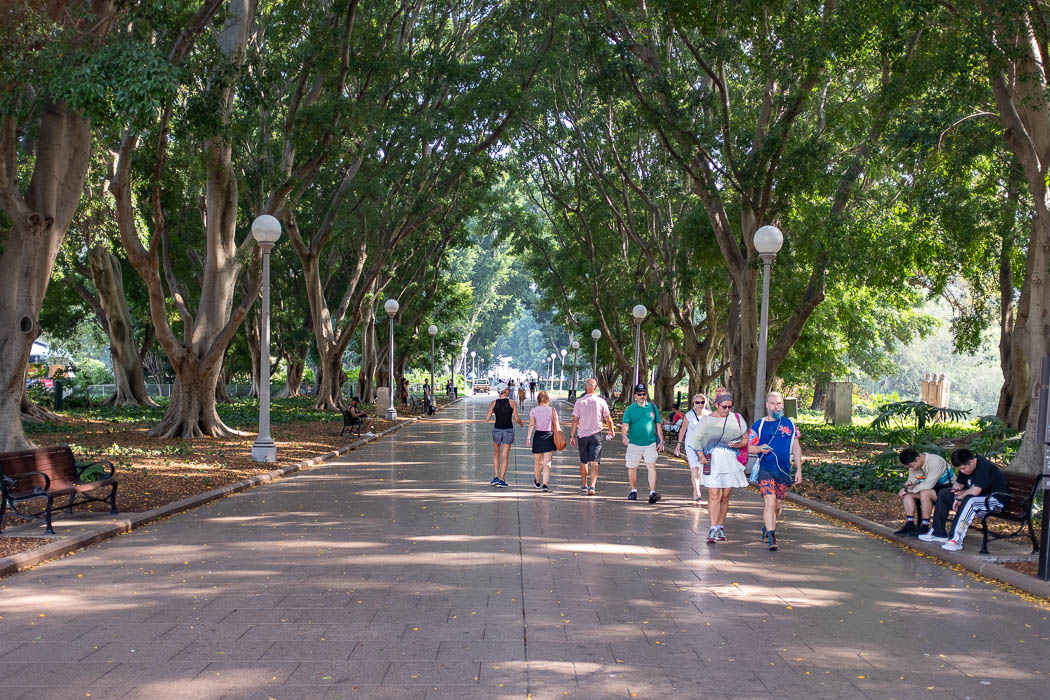
Hyde Park is a green oasis right in the center of town – the perfect spot to take a break from all the sightseeing, or perhaps even a picnic. Its dense canopy of trees offers some much-needed shade from the summer sun.
The locals obviously agree. Around lunchtime, the park fills up with Sydneysiders (as Sydney residents are known) enjoying their lunch break.
At the north entrance of Hyde Park is St. James’ Church, the oldest church in Sydney. Be sure to take a look inside, it’s really worthwhile.
Just across from the church is the Hyde Park Barracks. The former convict quarters have been refashioned into a living history museum. It’ll give you a pretty good sense of how the deported convicts were treated during Sydney’s early settlement period.
Further down in the southern part of Hyde Park you’ll find the ANZAC Memorial. You can visit the war museum commemorating the Australia and New Zealand Army Corps for free.
free
The Rocks
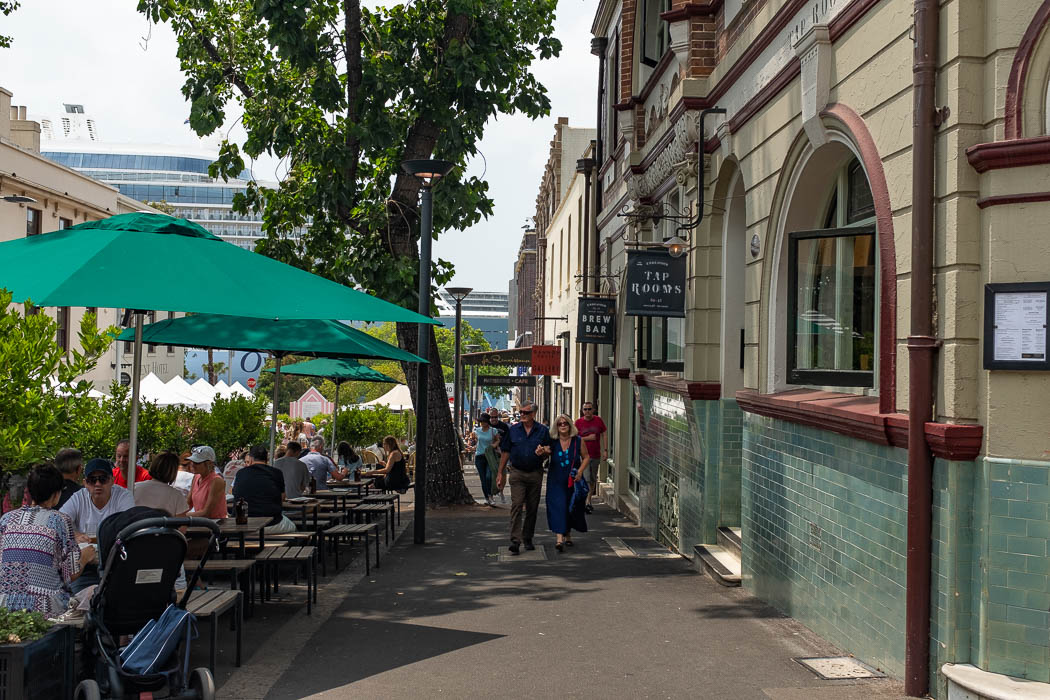
The harbor district The Rocks is the birthplace of Sydney. Once the dingy domain of soldiers and sailors riddled with taverns and brothels 200 years ago, its modern-day incarnation is much more sanitized with markets, galleries, museums, and pubs characterizing the quarter nowadays.
Take a stroll down Playfair Street, whose historic workers’ terraces now house boutiques and cafes, or join a guided tour of the neighborhood for a hearty dose of background information and anecdotes.
Book a guided tour of The Rocks
The Rocks Market sets up on George Street every Saturday and Sunday from 10 am to 5 pm. There are over 200 stalls selling jewelry, souvenirs, clothes, and lots of trinkets.
Another interesting place to visit here is Susannah Place Museum. You can see what life in this neighborhood was like for workers in the 1840s, including a colonial goods store.
Darling Harbour
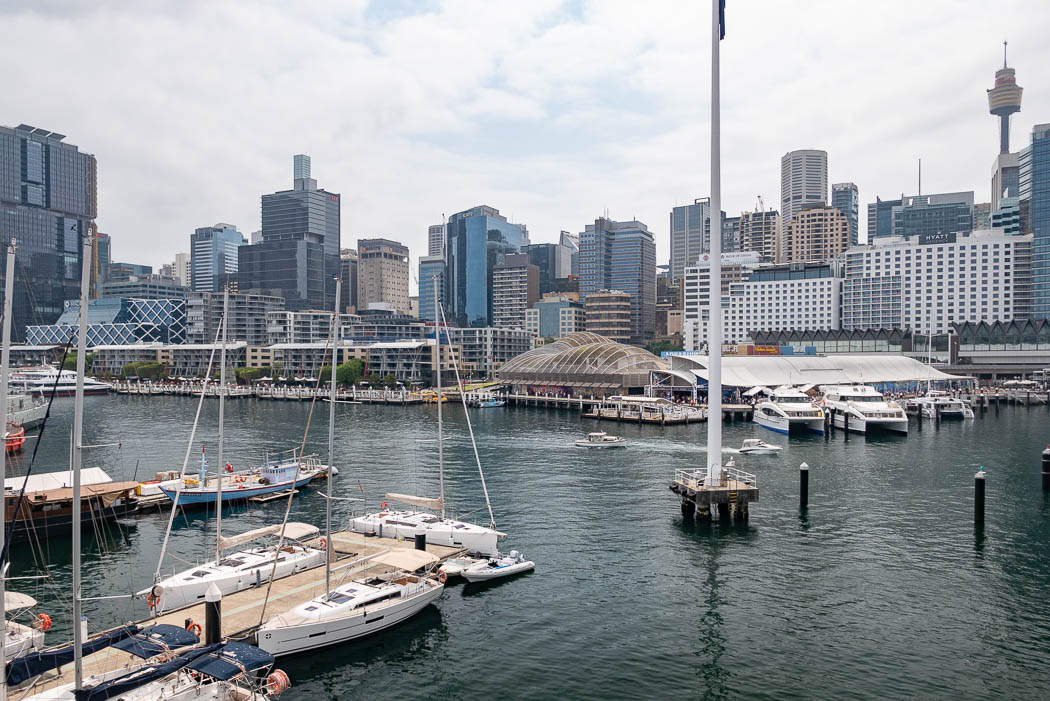
Darling Harbour is ground zero for tourism in Sydney. The whole area was extensively redeveloped in the run-up to the 2000 Olympic Games.
If we’re being honest, we weren’t all too keen on Darling Harbour. It’s just way too touristy for our liking. But it’s certainly a nice place for a sightseeing stroll.
Darling Harbour may also be a good place for you to stay in Sydney – it’s very central, all the major sights are nearby, and there are plenty of hotels.
Besides hotels and restaurants, it has all the same classic attractions as every other global city these days: a SEA LIFE Aquarium with 650 different species of aquatic animals, a WILD LIFE Zoo, and a Madame Tussauds.
So if you’re ever cursed with a rainy day in Sydney, Darling Harbour is a decent enough bad-weather alternative with these attractions.
You can pre-purchase tickets for all three Darling Harbour highlights online:
Book tickets for SEA LIFE Sydney Aquarium
Book tickets for WILD LIFE Sydney Zoo
Book tickets for Madame Tussauds Sydney
If you want to visit all three attractions, or even just two of them, a combination ticket is real bargain.
You can choose from Sydney Tower Eye, SEA LIFE Aquarium, WILD LIFE Zoo, or Madame Tussauds at a greatly discounted rate of A$65 for two attractions or A$75 for three.
Book a combination ticket for 2, 3, or 4 attractions
Bonus tip for kids: The Maritime Museum in Darling Harbour is a real highlight for children. Admission to the permanent exhibit is free.
Paddington and Surry Hills
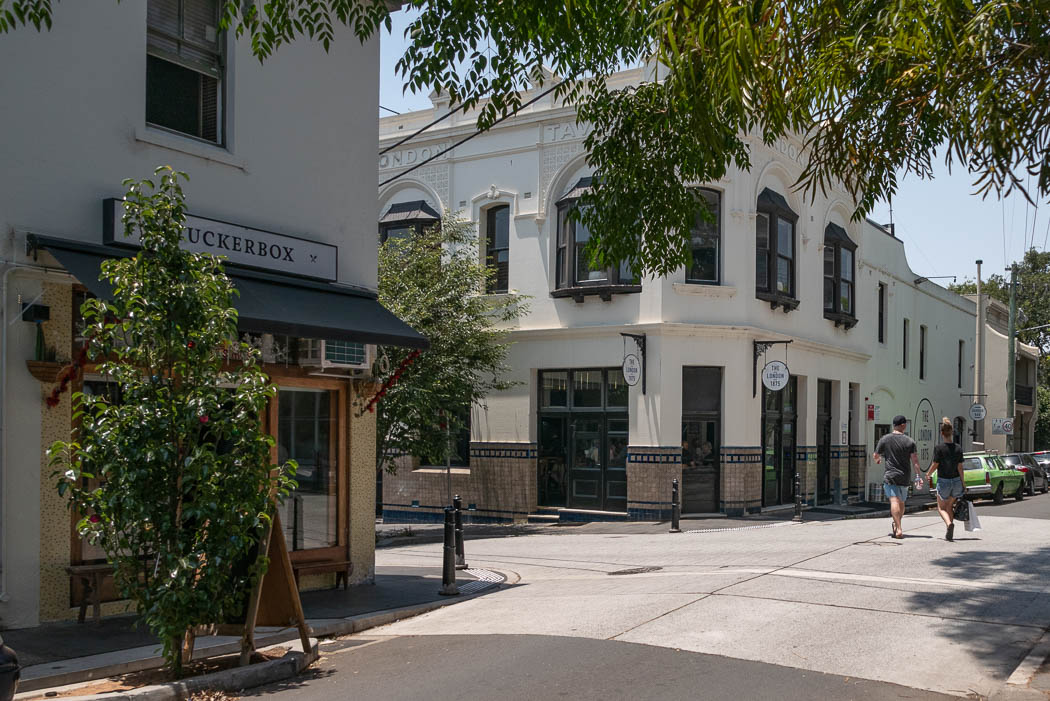
Paddington and Surry Hills are two of the most beautiful neighborhoods in Sydney. The two neighborhoods border each other directly and are among the hippest areas in Sydney today. You’ll find several galleries, bookstores, boutiques, and cafés there.
Just don’t expect to find any major tourist attractions in Paddington or Surry Hills. The neighborhoods are a sight in their own right with their semi-detached Victorian houses and pretty little stores.
Visiting Paddington is even more worthwhile on Saturdays. From 10 am to 4 pm, you can wander through Paddington Market and shop for clothes and souvenirs.
Newtown
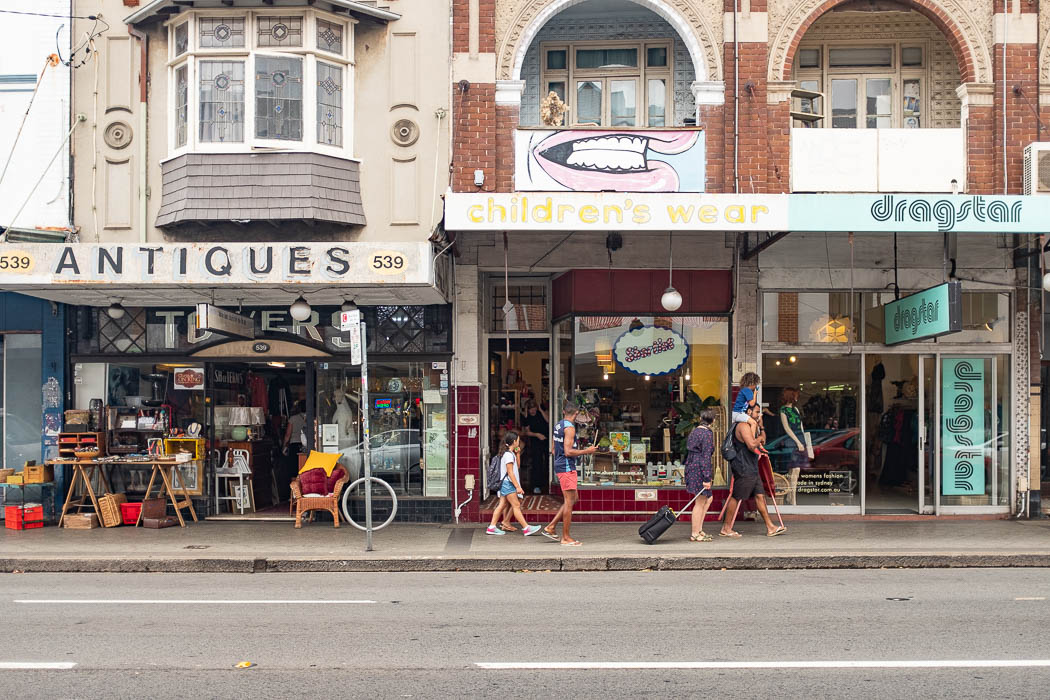
Sydney was a bit too polished for us in many places. Even the hipster havens of Paddington and Surry Hills seemed way too neat and tidy.
Where was the cool part of town where things are a bit more offbeat and rough around the edges? After searching high and low, we finally struck gold: Newtown was exactly what we were looking for!
Newtown is located off to the southwest of the CBD and Surry Hills. Take a walk down King Street for an eclectic selections of quirky stores, second hand and vintage boutiques, and lots of restaurants and bars.
And if you’re into street art, then Newtown an absolute must-see, there’s so much more here than in any other part of Sydney.
Chinatown & Paddy's Markets
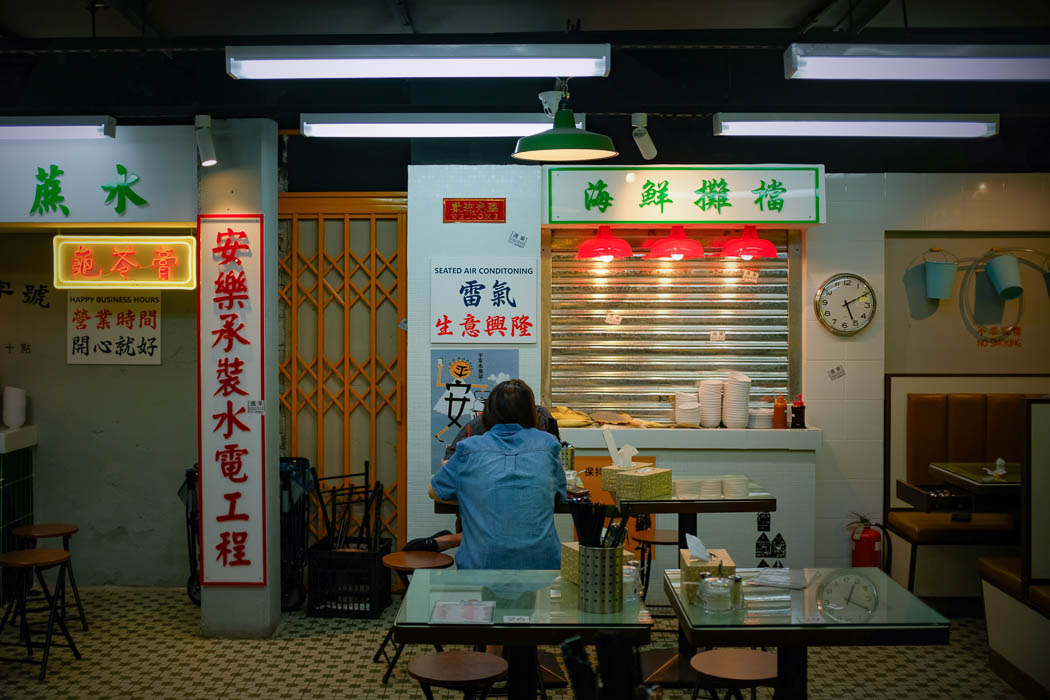
If you head south from Darling Harbour, pretty soon you’ll find yourself in the heart of Chinatown. As you enter Dixon Street, you’ll be greeted by the typical gate that marks the entrance to every Chinatown in Western cities.
Even the street signs here are bilingual. There are countless stores selling traditional Chinese trinkets, and above all plenty of opportunities for excellent Chinese food.
Friday evenings are the best time to visit. The Chinatown Friday Night Market sets up shop on Dixon Street from 4 pm to 11 pm, so you can stroll through its stalls and indulge in the delicacies on offer.
At the southern end of Dixon Street is Paddy’s Markets, a huge indoor complex of stores and flea markets, where you can find pretty much anything under the sun: clothes, fruit and vegetables, soap, spices, sunglasses, towels, cooking pots, shoes, handbags, jewelry, souvenirs, knick-knacks, you name it.
Bondi Beach
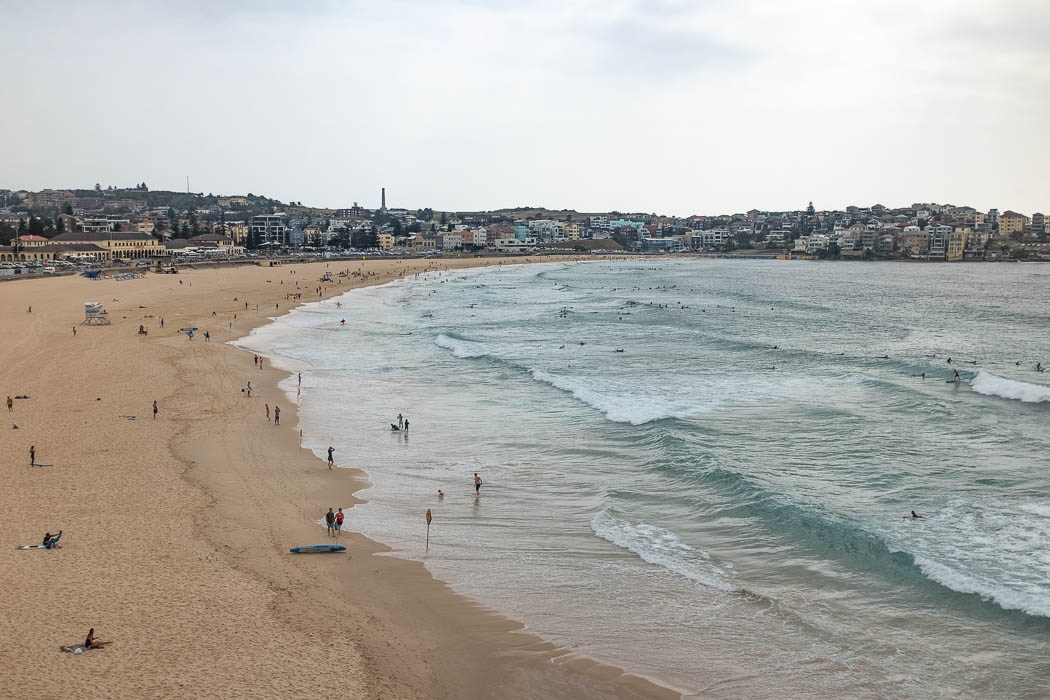
If you’ve seen enough of the city and want to spend a day at the beach for a change of pace, Australia’s most famous surfer beach awaits.
The eastern suburb of Bondi is bustling with water sports enthusiasts, families, and lots of beautiful people on the beach. That’s right, Bondi is all about seeing and being seen.
The restaurant at the southern end of the beach has the most beautiful view. Bondi Icebergs is actually a clubhouse for the local swimming club, but it’s open to visitors. Treat yourself to an ocean-view lunch above the seawater pool.
Bondi is the perfect place to get your feet wet if you’ve never been on a board before and want to give it a shot. You can take a 2-hour crash course here.
Book a surfing course at Bondi Beach
The only way to get to Bondi Beach is by bus. First, take the T4 train to the Bondi Junction terminus. Then take the 333 or 380 bus and get off at Bondi Beach.
The 333 bus originates at Circular Quay in the center of Sydney, so if you want, you can go the whole way by bus. It just takes a little longer.
Bondi to Coogee Coastal Walk
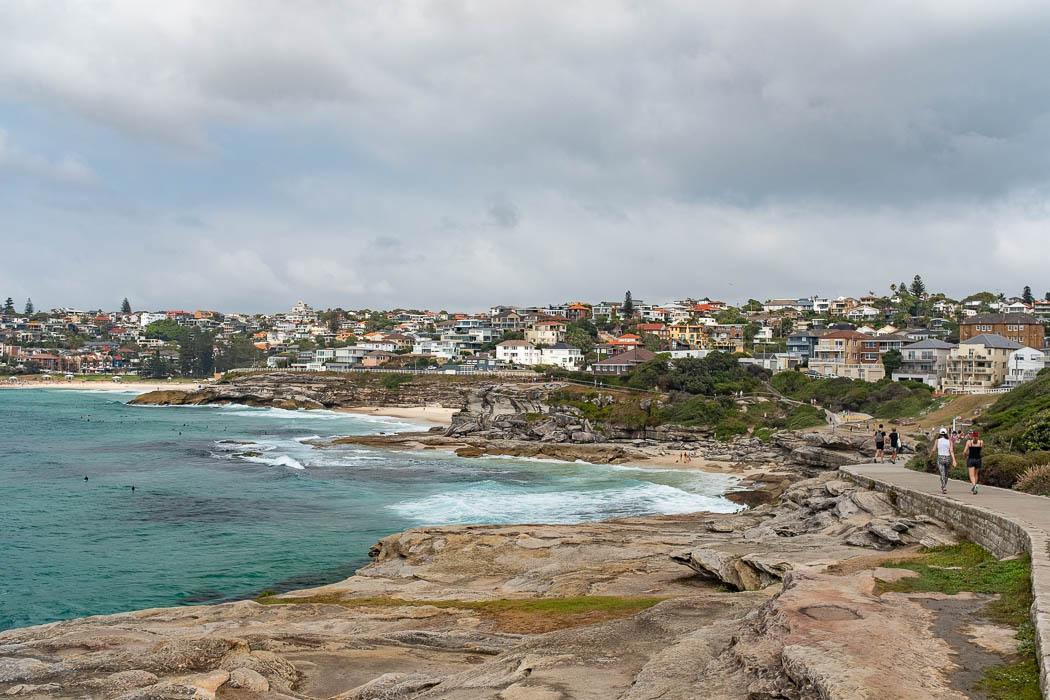
If you go to Bondi, make sure to do the Bondi to Coogee Coastal Walk. We personally liked it better than Bondi Beach itself.
The six-kilometer coastal walk from Bondi to Coogee runs right along the seafront, with one spectacular view chasing the next.
If you don’t want to hike the full distance, you can just walk to Bronte Beach. That’s only about 2 kilometers. Keep an eye on the sea if you’re here anytime between May and November: You might be lucky enough to spot a humpback whale migrating along this part of the coast.
Of course you can also go the other way around and start at Coogee Beach. If you head out north from there in the early morning, you should make it to Bondi Beach by noon. Spend the afternoon at the beach and leave for the lookout point in Dover Heights about an hour before sunset as the crowning moment of an amazing day.
To get to Coogee, take the T4 train to Bondi Junction and then take the 353 bus to Coogee. Get off at “Arden St opp Coogee Bay Rd”.
Manly Beach
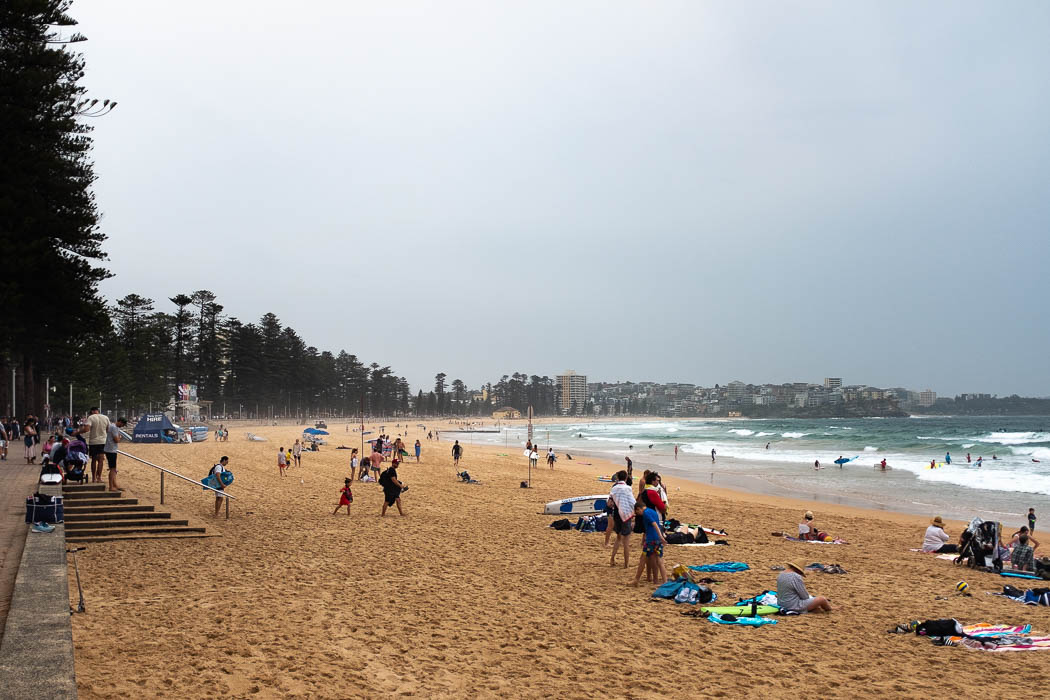
The most beautiful beach in northern Sydney is Manly Beach. Like Bondi Beach, it’s also popular with surfers, but Manly Beach has a much more laid-back atmosphere and village-like feel. Overall, we preferred Manly to Bondi.
Between the ferry terminal and Manly Beach you’ll find plenty of places for shopping, dining, and coffee. Just like the main beach, everything in the suburb of Manly is a bit more chill and less crowded than in downtown Sydney or Bondi.
If the sea is too rough for swimming, head for one of the two seawater pools instead. Queenscliff Rockpool is located at the northern end of Manly Beach.
The picturesque Fairy Bower Sea Pool is only about a five-minute walk from Manly Beach. Just head down the Marine Parade at the southern tip of the beach. The pool is easy to spot once you get there.
Manly also has plenty of smaller beaches if you’re looking for something a bit more subdued.
Our tip: There’s a really pretty bay just a few minutes southeast of Manly Beach: Shelly Beach. The beach is great for families, but the walk itself is already worthwhile.
A short walk from the ferry terminal is Little Manly Beach, another great spot for kids. The beach sheltered by a cove with virtually no currents. There’s a fenced off area in the water for added safety and a playground for when your little ones have had enough off the sea.
To get there, take the direct ferry service from Circular Quay to Manly. It’s super-convenient and offers spectacular views of Harbour Bridge and the Opera House as an added bonus.
Queen Victoria Building
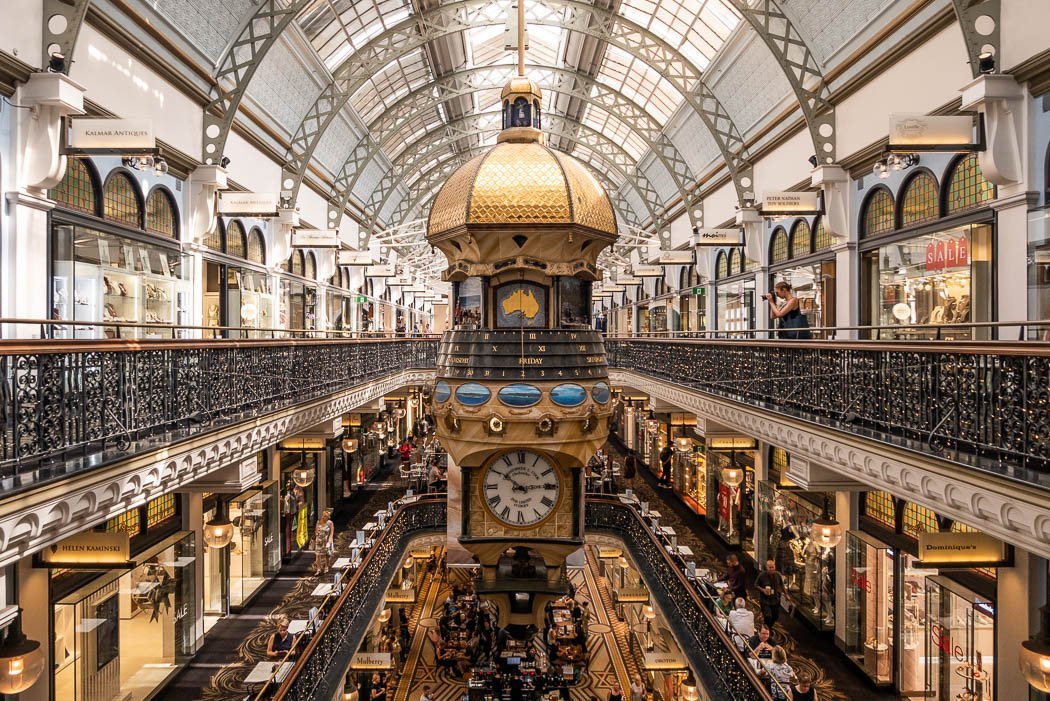
Located just a few meters from Sydney Tower is the Queen Victoria Building. Inside is a mall, but not just any mall: This historic building from 1898 is a real Victorian shopping gem.
The building was almost demolished around 1950, but fortunately there was a huge public outcry in Sydney once the demolition was announced, and the plan was quickly abandoned.
In 1986, the building was restored and now shines in new splendor as one of Sydney’s architectural highlights. Don’t forget to bring your camera because the building has an astonishing array of beautiful photo opportunities in store for you.
Of course, you can also go a huge shopping spree in the most city’s most exclusive shopping center. More than 180 stores and boutiques await.
Birdcage Alley / Angel Place
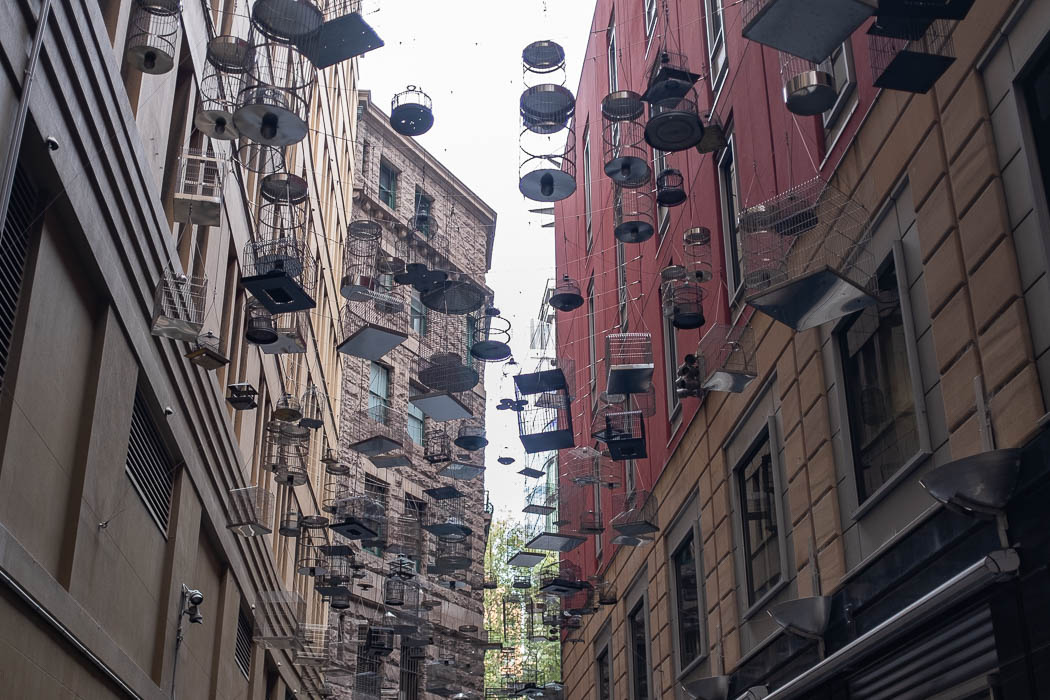
Birdcage Alley is a very cool photo spot. The small backstreet in the heart of the Central Business District is officially known as Angel Place.
Suspended above the street is an assemblage of empty birdcages, kind of like a surreal mobile. The installation was created by the artist Michael Thomas Hill, who dubbed his work “Forgotten Songs”.
The empty birdcages are supposed to symbolize the bird species that were native to the region before the city of Sydney was built.
You’ll hear different species of birds chirping from hidden loudspeakers. The bird songs change depending on the time of day and the biological rhythms of the individual avian species.
So be sure to take a detour into the tiny alley for a short reprieve from the constant thrum of the urban jungle. If you close your eyes and listen intently, you can almost imagine yourself being transported back in time to a different type of biotope.
Spice Alley
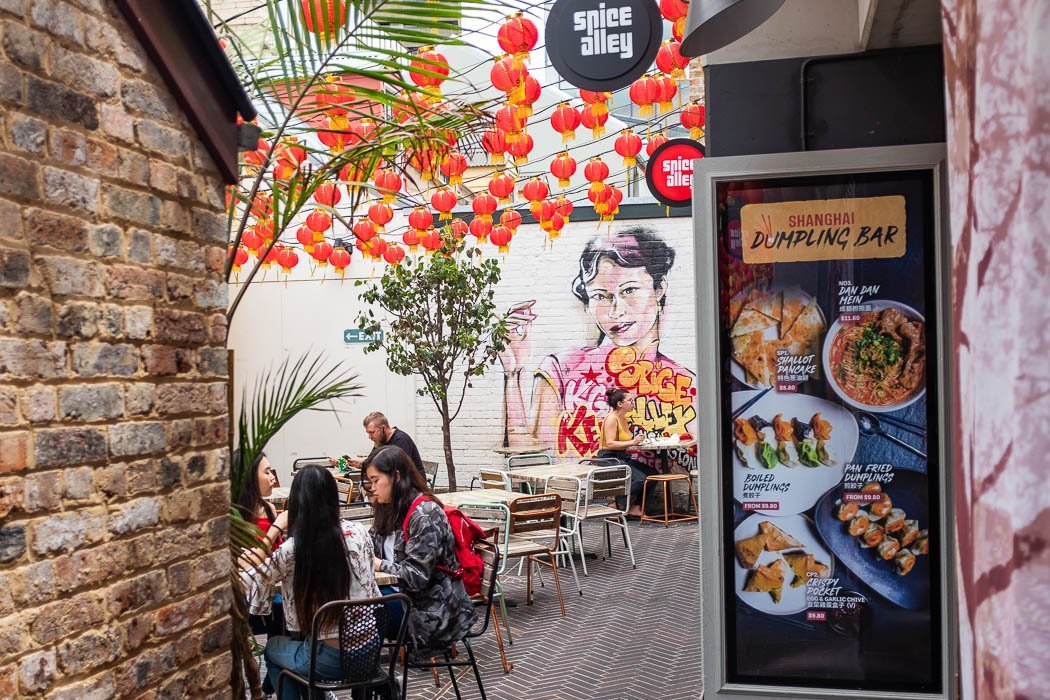
For delicious food, consider a detour to Kensington Street.
Just a few years ago, Kensington Street was in a sorry state. Every other building looked like it was about to collapse if the wind turned the wrong way.
Fortunately, things have turned around dramatically. Many of the quaint little houses have been restored, with plenty of brand-new buildings sprinkled in between.
Since 2015, Kensington Street has made a name for itself as a paradise for foodies, attracting flocks of hungry locals and tourists alike.
We really fell in love with Spice Alley, a vibrant open-air food court featuring a panoply of eateries serving delicious pan-Asian street food, including dishes from Thailand, Malaysia, Japan, India, Vietnam, and Indonesia, all at relatively affordable prices.
Sydney Fish Market
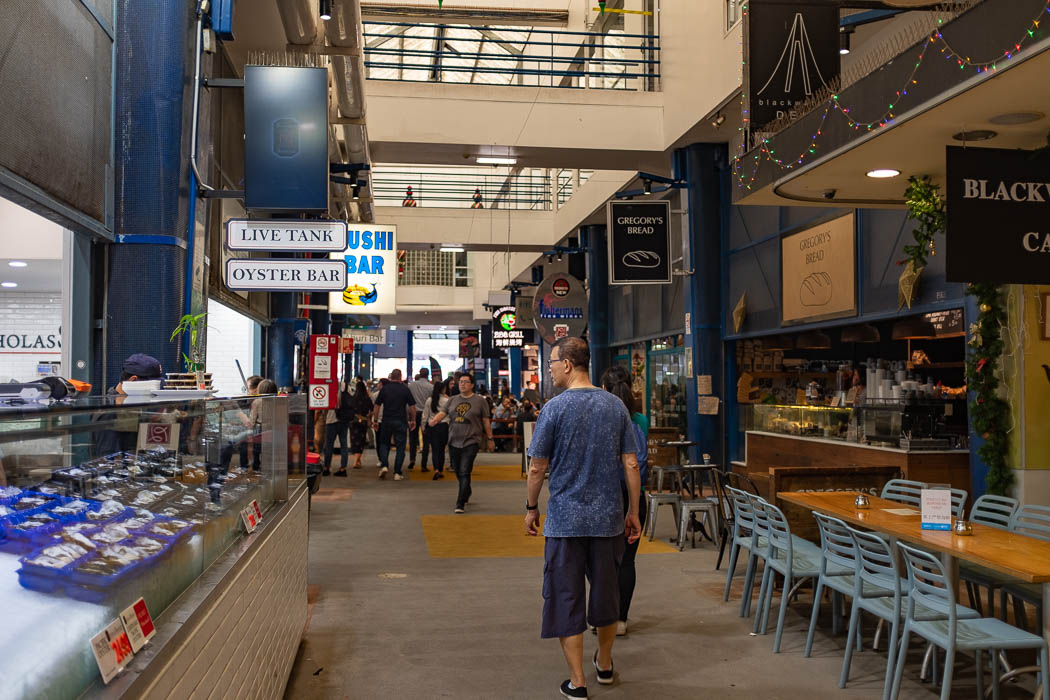
The fishing industry is a huge deal in Sydney, so it’s no surprise that the city is home to the world’s third largest seafood market. Located in Blackwattle Bay, just a few minutes walk from Darling Harbour, Sydney Fish Market serves up the spoils of the sea in all shapes and sizes.
Primarily a haven for wholesalers, many of the market stalls also cater to the general public. If seafood is your thing, you’re in for a real treat! You can feast on a cornucopia of fresh fish, sashimi, seafood, and even oysters.
Australian Museum
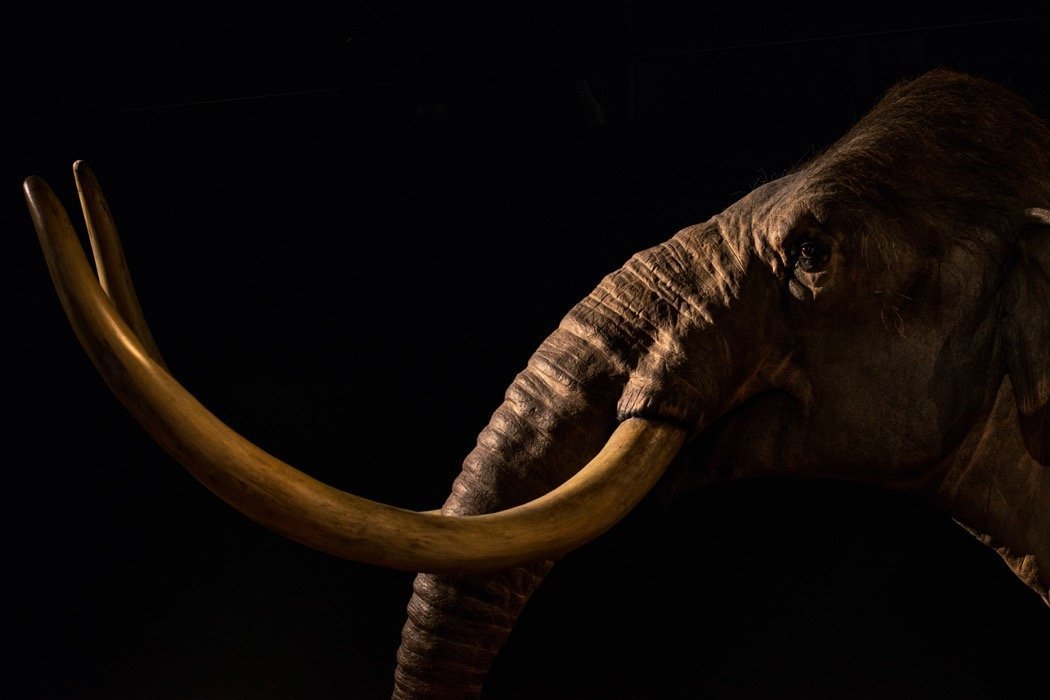
Founded in 1827, the Australian Museum was the very first museum to open in Australia. It’s located on the fringes of Hyde Park and houses one of the world’s most significant natural history collections.
If you’re interested in natural history, zoology, paleontology, or anthropology, the Australian Museum has you covered. The main focus is on Australia’s unique wildlife, with a few sections devoted to Aboriginal history and Polynesian culture.
St. Mary's Cathedral
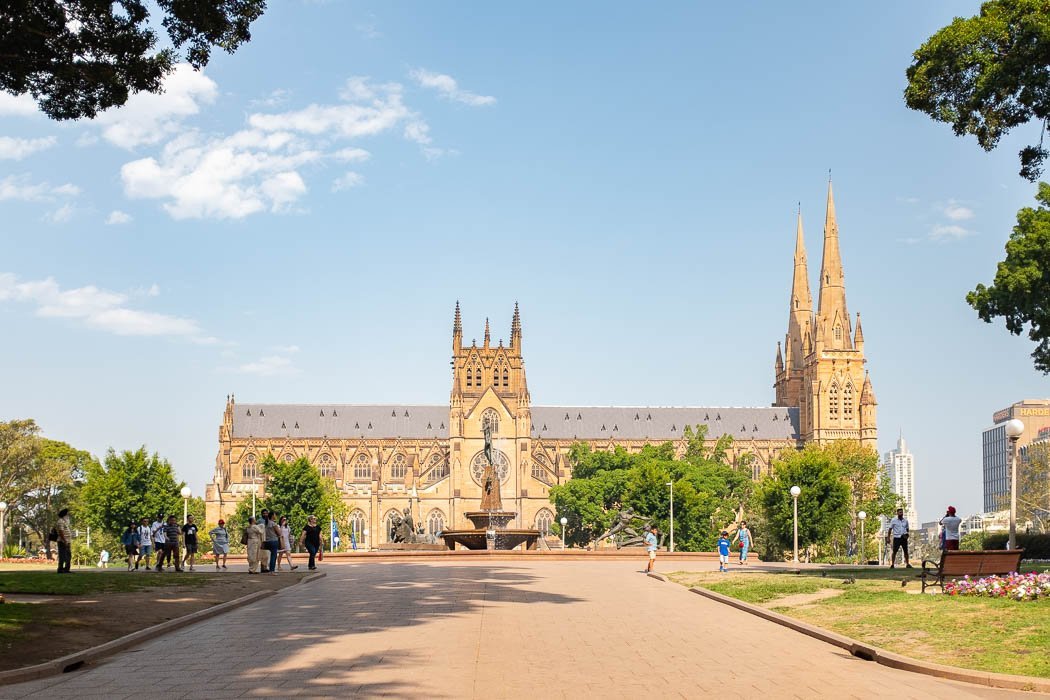
At the fringe of Hyde Park stands St. Mary’s Cathedral, built of sandstone. Built in 1868, the cathedral is one of the most beautiful Neo-Gothic buildings in the world.
Its full name is Cathedral Church and Minor Basilica of the Immaculate Mother of God, Help of Christians. That’s quite a mouthful, but if you just say St. Mary’s, everyone will know what you mean.
The best time to visit the cathedral is just before sunset, when the light of the setting sun hits the stained glass windows, creating a beautiful effect.
If you have the time, stick around until nightfall. The outdoor lighting in the evening is really pretty. And if you happen to be in Sydney around Christmas, the light projection displays on the church’s facade are absolutely spectacular!
Taronga Zoo
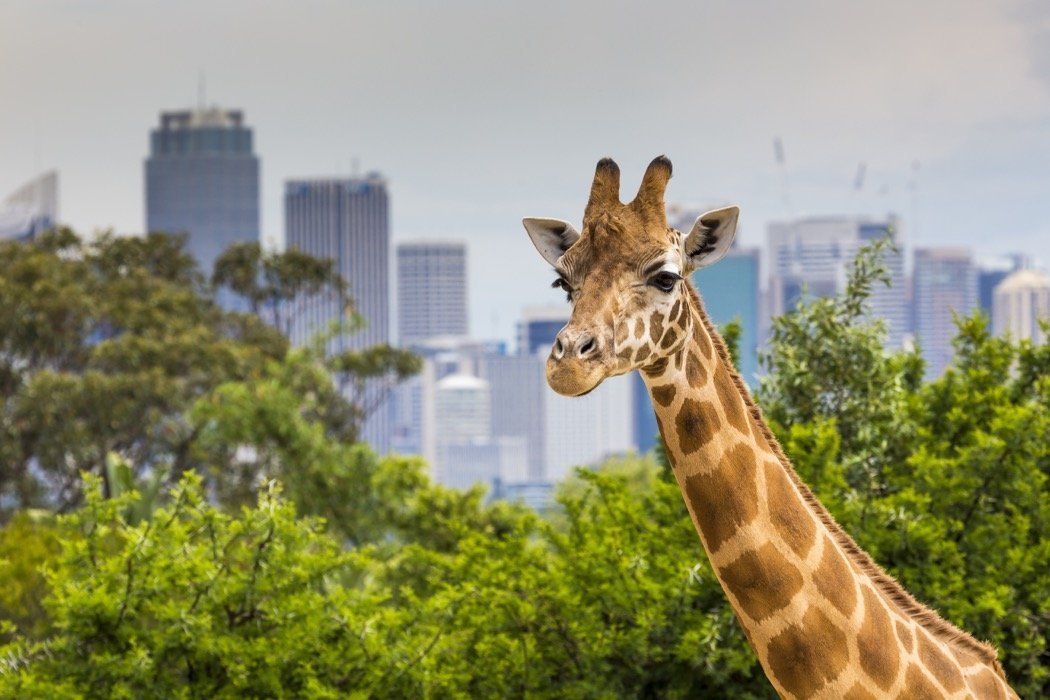
We usually aren’t big fans of zoos, but Taronga Zoo definitely deserves a spot on our list of Sydney’s top attractions.
The zoo in northern Sydney offers its animals and visitors an incredible view. The giraffes probably have the best view of Sydney’s skyline.
Almost 4,000 animals from different climate zones all around the world live at Taronga Zoo. On nine different trails you’ll come face-to-face with giraffes, reptiles, tigers, wombats, monkeys, koalas, and many birds.
Speaking of, the Sky Safari cable car also offers a fantastic bird’s eye view of the zoo. It’s already included in the admission price.
The zoo is huge, so you should plan at least half a day for your visit. If you have kids, you can easily spend the whole day at the zoo.
The best way to get to the zoo is to just take the F2 ferry from Circular Quay, conveniently payable by credit card or Opal Card. One of the main entrances to the zoo is located right by the ferry dock.
Tickets cost A$51 and are also available online:
General travel tips: The best way to see Sydney’s sights
Before we get to our 22 favorite attractions in Sydney, here are a few general travel tips to help you make the most of your time in Sydney.
#1: Choosing the right area to stay
Sydney is a vast and sprawling city, so choosing the right neighborhood to stay is essential.
If your number one priority in Sydney is sightseeing, we recommend booking a hotel in the Central Business District (CBD). That way, you’ll be within walking distance of Sydney’s major attractions with the best public transport connections to the rest of the city.
Check out our post on where to stay in Sydney for in-depth information on choosing the best neighborhood for your stay, with specific hotel tips for every budget:
Where to stay in Sydney: The best areas
#2 Getting around: Public transport in Sydney
The most convenient way to get around in Sydney is by public transport. There’s an extensive network of trains, a metro line, light rail, buses, and even ferries that stop near all the major sights.
Prices are relatively cheap compared to most major European and American cities. Your fare is determined by a combination of different factors: the type of transport (bus, light rail, train, etc.), the number of kilometers traveled, and the time of day (it’s more expensive during rush hour).
If that sounds really complicated, don’t worry, there’s no advance math requirement – the ticketing system does all the work for you. That’s actually the best part: You’ll never have to buy a ticket for public transport in Sydney. If you have a credit card that supports contactless payment, you can just use it tap on and tap off before entering/exiting a station or vehicle.
The fare is simply charged to your credit card at the end of each journey. That’s all! No paper tickets, no broken vending machines, no heated arguments with ticket inspectors because you bought the wrong ticket. Everything’s taken care of automatically in Sydney.
What’s more, there’s a daily fare cap of A$16.30 per day (or A$8.15 on weekends). That means no matter how much you travel, you’ll never pay more than that amount per day.
For that to work, each passenger will need their own credit card. If anyone in your group doesn’t have a contactless credit card, you can buy an Opal Card at one of the stations, including the airport, or from a licensed vendor (e.g. a 7-Eleven) in Sydney.
The Opal Card is a top-up travel card for public transport in Sydney. It basically works the same way as a credit card, you just tap on and off every time you travel. Just make sure there’s enough money on your card to cover your fare.
#3: Save time and money with a Sydney city pass
A Sydney city pass can save you a lot of money if you’re planning on doing a ton of sightseeing. What’s more, it also includes fast-track admission to many of the attractions, which can save you a lot of time you’d have wasted waiting in line otherwise.
We chose the Sydney Explorer Pass from Go City for our visit. It lets you to pick a certain number of attractions you want to visit at a considerable discount compared to paying for each one individually.
There are two other options available: The Sydney Flexi Attractions Pass, which is similar to the Go Sydney Pass, but with a slightly different line-up of available attractions, and the Unlimited Attractions Pass, which is the perfect choice for real sightseeing hounds, allowing 3 or 7-day access to all included attractions for a flat fee.
| Sydney Explorer Pass | Flexi Attractions Pass | Unlimited Attractions Pass | |
|---|---|---|---|
| Validity | 60 days | 3 months | 3 or 7 consecutive days |
| Included attractions | 2-5 or 7 | 3, 5, or 7 | 30 |
| Price | From A$80 | From A$150 | A$289 / A$399 |
| Order pass | Order pass | Order pass |
What else can you recommend to see and do in Sydney?
That wraps up our list of the 22 best sights in Sydney! Have you been to Sydney and do you have any tips to share? Then we’d love to hear from you in the comments!

